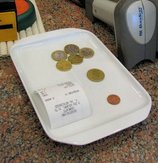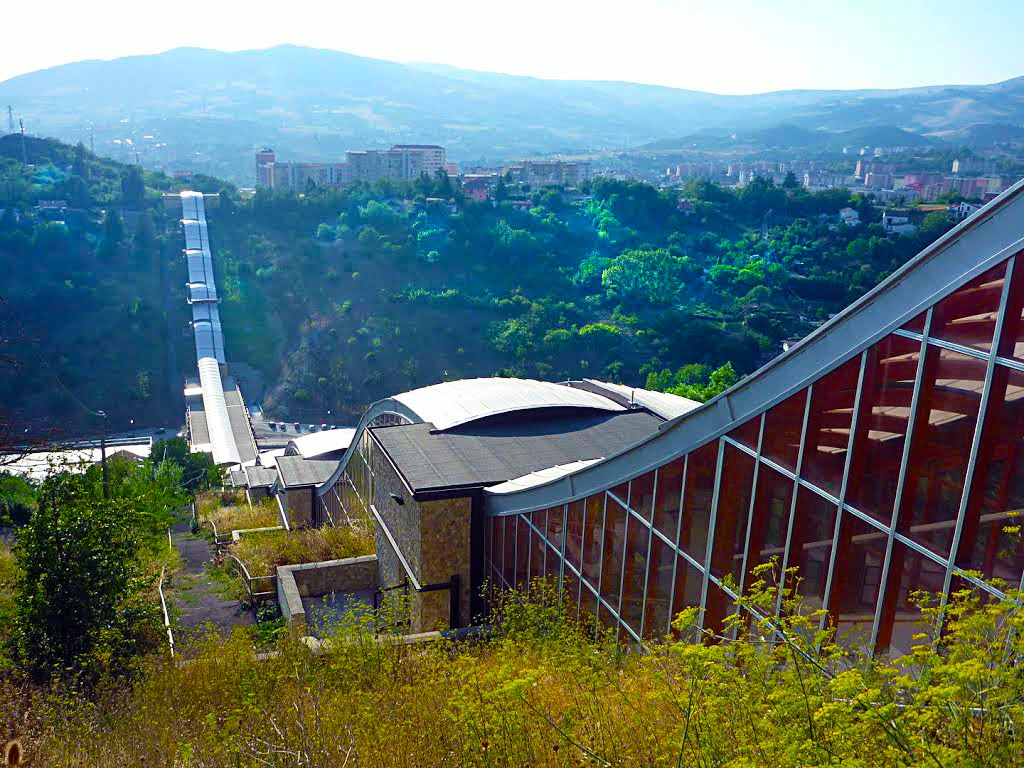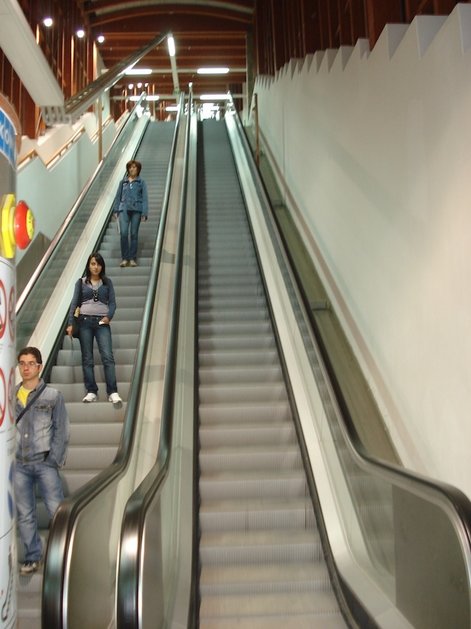|
The culture in Italy is very different than in the U.S... especially concerning rules of proper behavior. What is acceptable in the States might be considered disgusting in Italy. What Italians consider as normal behavior, we would never thing of doing at home. Here are a few differences...  Popular tissues in Italy Popular tissues in Italy
 Pick up your change Pick up your change

 It's Chilly down there It's Chilly down there
--GVI  No shit! There really is a Shit Museum in Italy... the Museo della Merda. It was in 2015 that Gianantonio Locatelli founded the "museum" in Lombardy along with his associates: Luca Cipelletti, who manages its projects and products, Gaspare Luigi Marcone and Massimo Valsecchi. The idea came into being in Castelbosco, in the province of Piacenza (just south of Milan) on a farm which makes milk for Grana Padano cheese and includes seven production units. Here every day 3,500 specially selected cows produce around 50,000 litres of milk and 150,000 kilos of poop.  Letame Essciato - Dried Manure fertilizer Letame Essciato - Dried Manure fertilizer The future-thinking Locatelli wanted to turn all this excrement into something useful with his ecological, productive and cultural scheme. Using highly innovative systems, electrical energy started to be produced from the manure. Today the farm produces up to three megawatts per hour! The buildings and offices of the farm are heated exploiting the warmth given off by huge processing tanks called Digestori (digesters) turning the manure into energy. The process also produces fertilizer offered for sale under the name MerdaMe (Shit me). All these activities have drawn attention from various international institutions concerned with ecology and innovation, leading to widespread recognition and prizes, and making Castelbosco a point of reference.  Locatelli began to gather together friends and artists, leading him to the idea of the Shit Museum. The Museum itself might be called a canvas onto which artists create... the Digesters themselves transformed into a bright colored landmark in the area. The idea for a new museum slowly took shape, emerging from manure to deal with the broader theme of transformation. The museum would be an agent of change which, through educational and research activities, the production of objects of everyday use and the gathering of artifacts and stories concerning excrement in the modern world and throughout history, was to dismantle cultural norms and prejudices. The first stage of the project was carried out in April 2015 with the inauguration of the exhibition spaces of the Museum, in the rooms on the ground floor of the company premises, located within the medieval castle of Castelbosco. The museum is a blend of aesthetic, scientific, human and animal experiences, both modern day and historic. The concept is that shit is a useful and living material. The symbol and mascot of the Museum is the dung beetle, considered divine by the Egyptians (and symbol of the Museum itself), to the use of dung in architecture, from ancient Italian civilizations to those in Africa, via historical-literary works such as Pliny’s Naturalis Historia. Right up to the latest scientific research and works of art drawing on the use and reuse of waste and discarded materials, the Museum is a contemporary cabinet of curiosities which finds its main guide in the science and art of transformation.  Museum Activities Right from the start, the Shit Museum was designed to be a production center not only of ideas and exhibitions, but also of objects and projects. The implementation and patenting of the Merdacotta® brand sums up the principle of sustainability. The poo is mixed with clay and gives shape to the first products to bear the Museo della Merda brand: vases, flowerpots, tiles, plates, bowls, a jug and a mug in simple, clean, rustic shapes, harking back to ancient principles. The ‘primordial products’ of the Museum were presented for the first time during the 2016 Salone del Mobile, in an exhibition which won the promoters Cipelletti and Locatelli first prize in the Milano Design Award. The motivation given was as follows: “for the development of a process of great complexity and innovation, capable of destabilizing common perceptions. The educational itinerary breaks down all the commonplace stereotypes and offers a censorial experience, one which promotes a new vision of the culture of the project.” Museo della Merda
Frazione Campremoldo Sopra Loc. Castelbosco 29010 Gragnano Trebbiense (PC), ITALY To Make an Appointment: [email protected] For information: [email protected] While researching another subject using Google Earth, I came across this unusual scene just outside of Canosa di Puglia... a beautifully built Highway to Nowhere.
Oddly, the "street view" from several years ago shows nothing but dirt roads and farm fields. The satellite view taken in 2017 shows this beautifully built highway and a wonderfully wide roundabout in the middle. The only problem is, it goes nowhere and comes from no where. There are dirt roads and vineyards around all sides and the paved intersections intersect with dirt roads. There are no structures within the "development" area... just olives and grape vines. Go figure. Perhaps the regional government thought, "If we build it, they will come." --Jerry Finzi There is that old saying (or aphorism), “Don’t raise the bridge, lower the river" that every engineering student knows. It describes the attitude about the obvious: there are no obstacles in getting things done. Just analyze the problem, and think of a way around it. But this doesn't usually mean literally. "Lowering the river" is what lies behind the design of most canal locks in the world. I've even seen canals built on viaducts, making the water travel over an obstacle, like railroad tracks or a road. But I've never quite seen the Italian solution to the problem illustrated above. In Manhattan, for example, if a work crew arrived, permits in hand, ready to dig a ditch for a sewer or communication cables, a call to the City's tow trucks solve the problem in no time at all. Tow the car out of the work zone. Done. In Italy, however, perhaps because of the lack of a reliable city department that would actually handle this problem--before the 12-3pm riposa--these workers figured they wouldn't wait for anyone else and solved the problem their way. Furbo. Look out for your own interests. Get the job done and get back to your own life. Why worry about some future contractor trying to locate that underground run of cable that he thinks should be in a straight line.
Besides, "Why have someone's car towed away and cause someone else problems? It might be my friend's cousin, or my cousin's cousin, or, Dio mio... someone's nonna!" --Jerry Finzi Watch just about any old movie filmed in Italy and more than likely they'll be flirting... especially the stereotype of an incorrigible flirt coming on to a woman. An old gent pursing his lips to his fingers letting a young girl know how tasty she looks, or a young regazzo following for a few steps on the street accosting a young lady with a flurry of metaphorical compliments, or it could be a supposed innocent young boy blurting out blatantly how great a woman's legs are. Flirting is part of life in la Bel Paese. In fact, there is a special metaphor for it... fare la civetta, which literally means "to make like an owl", or simply una civetta (an owl) meaning "flirt". The expression was first penned in 1494 when poet Poliziano used the word civettare to describe how a woman might attract a man, by cooing like an owl to attract her prey, and then silently pouncing on them with their sharp talons as their prey approaches. In reality, Italian women do flirt more like an owl than men do. They are more subtle and less obvious than the screeching of regazze hawks. A young regazza will start to walk away from her prey, but then turn her head back slightly with a half smile and side glance, and then keep walking away.... Hooked. Hair dangling over the eyes is another technique. Lowering her head and letting a few wisps of hair hide her admiring glance at a young man, but then flipping them back into place shows a guy she sees something she likes... Hooked. Subtle and blatant at the same time, una giovane bellezza (a young beauty) may be sitting at a gelateria touching a spoonful of gelato to her lips, glance over at her targeted regazzo and slyly lick her lips, putting her spoon right back to the work of enjoying her confection... Hooked. Amazingly--but very Italian--there are many distinct variations in the way this word is used:
The context matters, too. For instance, if someone says "Non andrai da nessuna parte con Adelina. È una vera civetta." (You won't get anywhere with Adelina. She's a real tease.") Most men stay clear of a tease once they become away of their game. Curiously, there is even the giacca civetta (owl jacket). This is the second jacket a man leaves over the back his chair at work so the boss and co-workers think he is somewhere in the building... when in reality he is out of the office wearing his other jacket (metaphorically or otherwise) while fare la civetta. Even more interesting, I recently discovered the expression Italians use for "bait and switch" when a company advertises one cheap product (the owl cooing) just to trick you into buying their more expensive one (the talons)... Produtto civetta! Perhaps Italian men have gotten a bad reputation, mostly from stories of them pinching girls behinds or following aggressively down the street. In fact, Italian men are Mama's boys, very romantic and won't marry until they find l'angelo perfetto (the perfect angel), or one as worthy as Mama. Their flirting can also be very direct, but often in poetic praises:
"Hai degli occhi bellissimi." (You have beautiful eyes.) "Mi piace il modo in cui ridi" (I like the way you laugh). "Il tuo sorriso è davvero fantastico!" (Your smile is really awesome!) "Ho visto che mi stavi guardando e ho pensato di venire qui a fare due chiacchiere." (I saw you were looking at me and I thought I could come over and chat). "Complimenti alla mamma." (My compliments to your mother). "Nel cielo manca un angelo?" (Is heaven missing an angel?) "Ti sei fatta male cadendo dal cielo?" (Did it hurt when you fell from heaven?) In English these pick-up likes might sound corny... in Italian, just try to resist... --Jerry Finzi What does Furbo mean? Click Here.
Basilicata is a hilly, mountainous region, and its capital, Potenza sits at 2700 feet above sea level--the highest elevation of any regional capital in Italy. It has a medieval historic center on the top of one hill, and a much newer part of the city on another, with a 300 foot dip in between. People need to commute to work from the historic center to the other hill to work in modern government offices, retail outlet stores and even a conservatory of music. Multiple modern apartment towers on that hill also have people commuting the other way around--to the old town.
Vito Santarsiero, who spearheaded the project during his 10 years as mayor, has been optimistic that interest will grow as word spreads about Potenza’s attractions. He is no longer the mayor. The Scale Mobile Santa Lucia has been plagued by problems ever since it opened... mechanical breakdowns, cost overruns, lack of use, safety, grafitti, and even "up-skirt" weirdos photographing ladies panties as they rode up the escalators. To me, it seems the whole design has a couple of major flaws. First of all, on the Via Tammone side (the new town), there is only the entrance building for the escalator system. There is nothing there. No parking lot--so people needing to get to the old town have somewhere to park right next to the escalators. It;s not that there isn't space for a public parking lot--there is a hugh grassy field laying empty right there. There is no piazza, no park, no bar or cafe, no where for people to mingle, meet and take in a view of the old historic town on the opposite hill. And even if there was a little piazza with a view, there would be nothing nice to look at. It seems that some time ago, local politicians gave permission to builders (meaning, they were paid off) to erect tall, ugly, modern apartment buildings which blocked the view of the old town. They are built along the edge of the old town right in front of all the historic structures. There is a beautiful bell tower, but you can't see it. There are clay tile roofs, but they too are blocked. Perhaps I tuned in to this because of where I grew up on the Jersey Palisades across from Manhattan on the Hudson River. When I was a kid, crooked politicians sold the citizens a bill of goods about their taxes going down (never happened) as many high rise apartment buildings went up--blocking the view from the older historic homes along the boulevard. Now, when you look back to New Jersey from Manhattan, there are parts of the Palisades that are nearly wall-to-wall high risers. I have never seen this in Italy. More typically, Italians are incredibly proud of their hilltowns and their views. I can't tell you how many wonderful little outdoor spaces I've discovered right at the edge of the hilltop view of a valley below, the sea, or mountains. I've seen large piazzas, tiny vest pocket parks, children's playgrounds, or even just a simple promenade with benches for taking a stroll during the evening passeggiata with your family or friends after dinner. There is nothing substantial on the modern town side of this "escalator system" for several blocks. It's just sort of--there. Now don't get me wrong. I'm a big fan of public mobility projects in Italy, especially helping people get from a low part of a town to the highest parts. There are literally thousands of hilltowns in this mountainous country. In San Gimignano, I welcomed the elevators that took us up--and then back down to the old town from the public parking lot below the historic center. And I'm sure visitors parking below the "Under the Tuscan Sun" hilltown of Cortona appreciate the outdoor escalators that take them from the parking lot up almost 200 feet to the Piazza Garibaldi. The Potenza escalators made some people's pockets fat, but was there really a need for them? --Jerry Finzi |
On AMAZON:
|































 RSS Feed
RSS Feed

